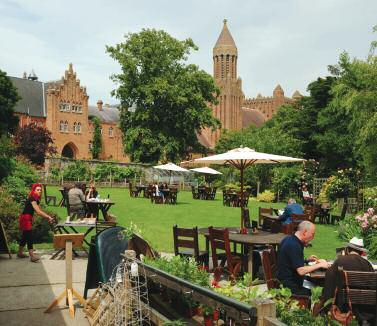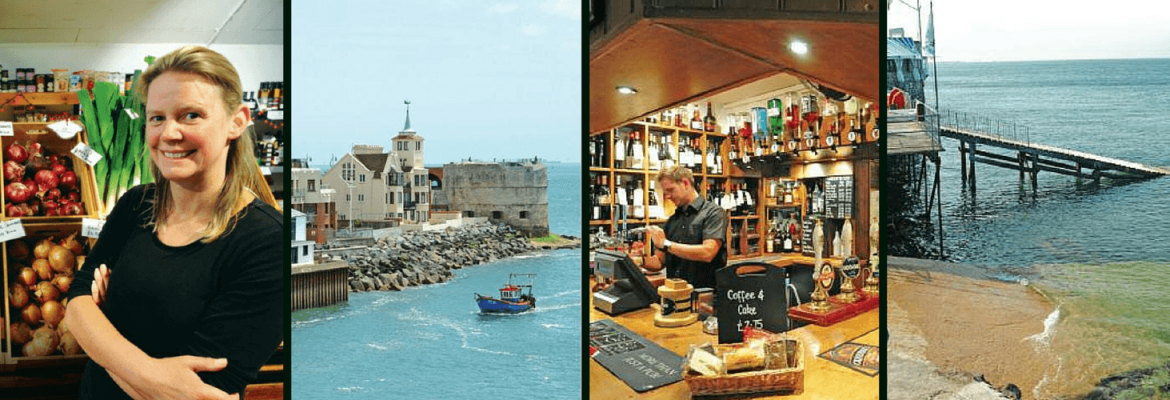“The tables dotted aroud Quarr's peaceful Tea Garden overlooked by the warm architeture of the church are a unique place to enjoy eating.”
WITH HMS Victory’s masts in the background, the Wightlink ferry casts off and slowly moves past the ancient fortifications of Portsmouth, Gosport and Southsea and across the spot at the harbour mouth where Mary Rose was lost.
Starting a trip to the Isle of Wight feels like a journey through 800 years of naval history. Then a modern warship at anchor with its curious grey geometric, angled shape brings us back to the present as we head across a Solent dotted with the white sails of yachts. Looking back as you pass Spitbank Fort, built to defend against Napoleon III in the 1860s, you can still see the masts in the historic dockyard and some more of the Royal Navy’s scant fleet. Dominating the view is the white sail-shaped Spinnaker Tower. It’s a vista to stir the excitement of travel.
The magic is working on the several parties of junior school children who are setting out on trips. They cluster by the rails on the viewing deck and bombard their teachers with questions.

Visiting the Isle of Wight is something special because of the short crossing and the history. It’s only a small island but there is always something new to discover. The last time, we were in search of churches (Choice, January 2013); this time we were on the Taste Trail.
The sun picked out the beaches, headlands and the houses overlooking them the nearer we got to the terminal at Fishbourne, and it seemed like a pretty good way of enjoying this most traditional of British islands – sea, history, and good food. What more could you ask?
The first stop on our taste trail was close to the ferry terminal at the Benedictine Monastery, Quarr Abbey. A community of Benedictine monks bought Quarr Abbey House on the site of a ruined abbey and built the splendid red brick Abbey Church and guest house in 1911. The monks, refugees from persecution in France, had arrived on the island in 1901.
Queen Victoria had been a frequent visitor to Quarr Abbey House, and her daughter, Princess Beatrice, had spent her honeymoon there following her marriage to Prince Henry of Battenburg.
During the First World War, the Guest House was used for the convalescence of wounded soldiers. Princess Beatrice came to visit them as governor of the Isle of Wight. Robert Graves stayed there for a short time and recalls the fact in Goodbye to All That.
Quarr’s land is used to grow vegetables and fruit in an innovative scheme where local charities can cultivate their own patch to support their work.
Visitors can enjoy Quarr’s produce in their farm shop and tea garden. The tea garden also serves light meals – great food – but it is the setting that makes it even more special. The tables dotted around the peaceful garden overlooked by the warm architecture of the church are a unique place to enjoy eating. You will also see red squirrels.

